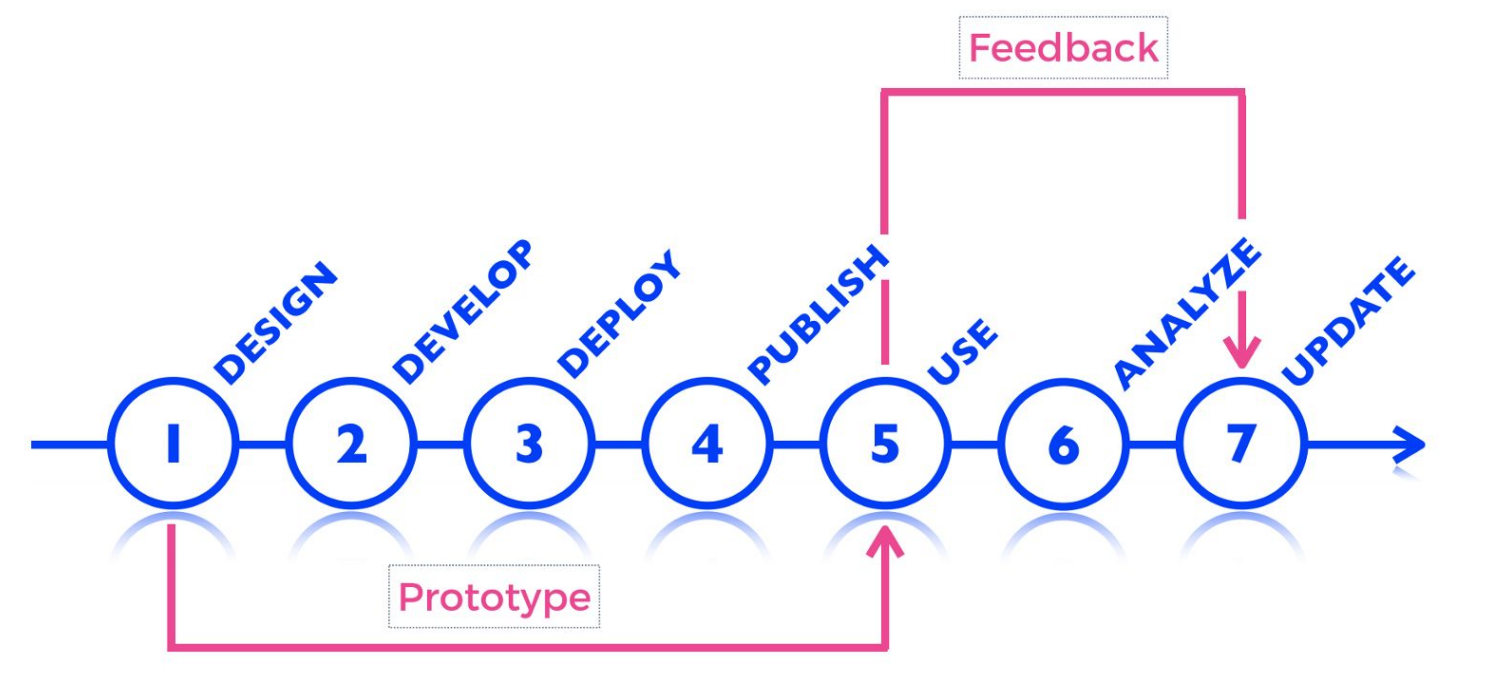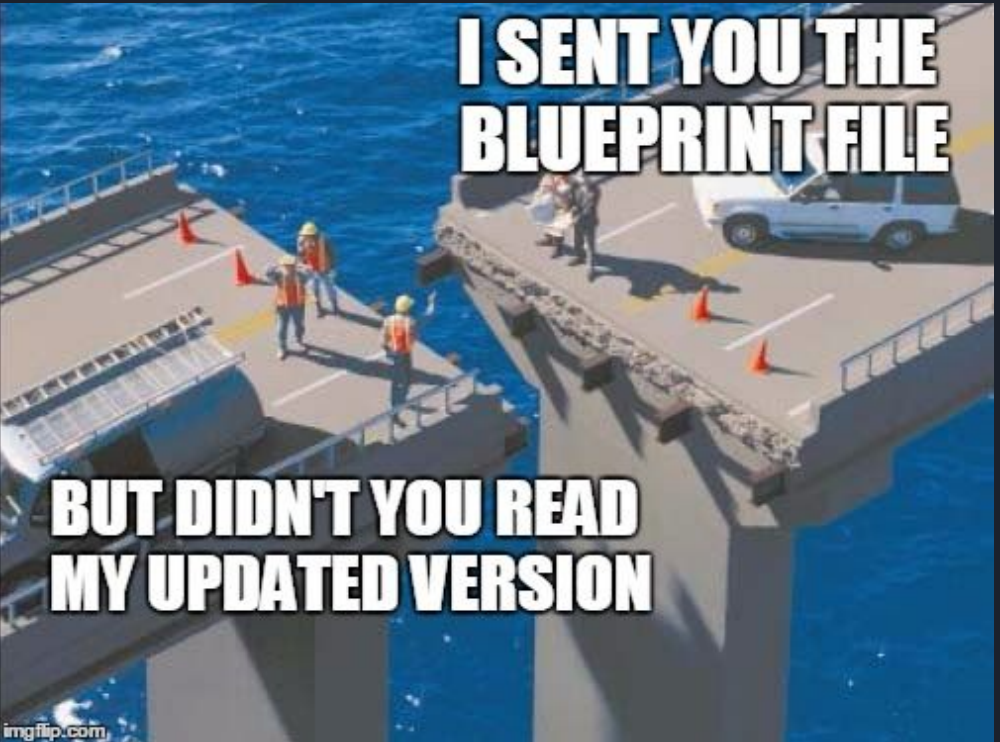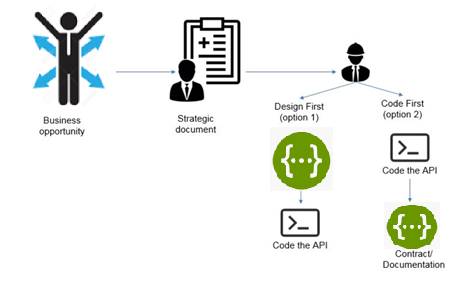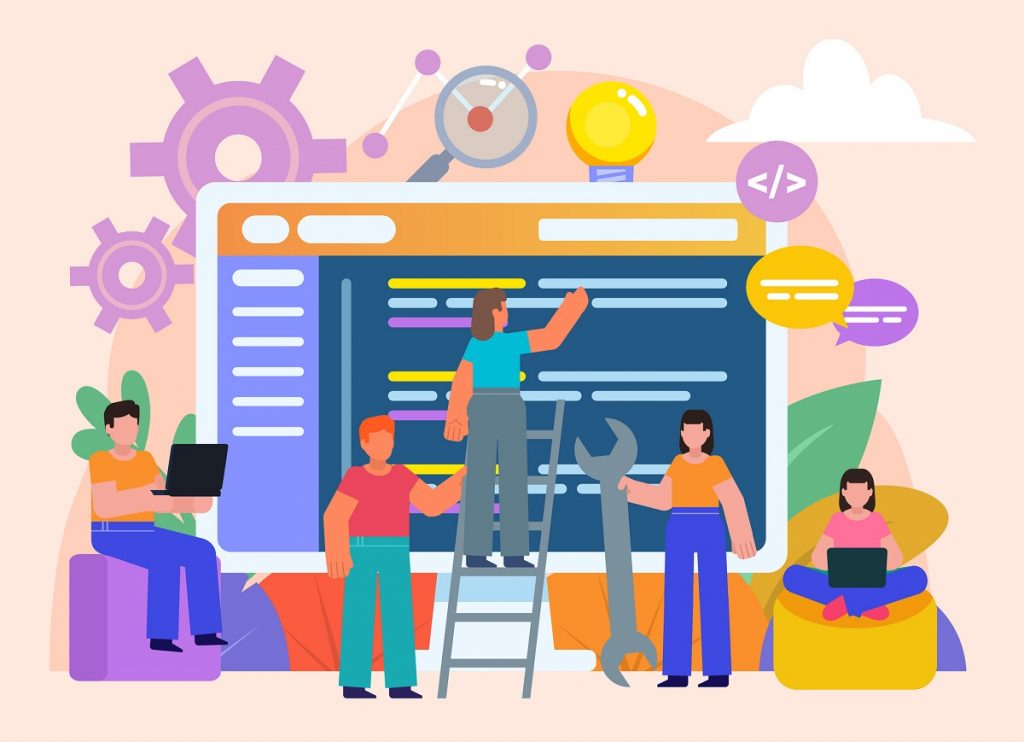The (obvious) importance of APIs in this era of modern and powerful web browsers with the rise of smartphones, IoT devices, simplification of protocols along with newer business models cannot be understated. APIs are here to stay, and the quality of a company’s API Design importance provides a view into how the business truly values developers.
With APIs–remember developers are your “customers.”
So, it’s essential to treat an API as a Product, even if it’s just for internal usage and adopt the same action mandate as you would for other products. As with every product lifecycle, the design phase starts at the very beginning.

The design phase should involve a collaboration between the business and technology, without which there could be tremendous gaps.

Code-First or Design First: Which path to take?
As a business opportunity is presented, there are strategic documents that are worked in collaboration with business and technology. On the next phase, as the work on designing APIs begin, we must decide which path to choose–Code-First or Design First.
READ MORE: Axel Grosse brings his API Design knowledge to Dublin.

With the Code-First, it’s a more traditional approach involving generating the documentation from the code. When delivery speed matters and its mainly internal usage, there are instances where teams leverage this approach and are initially successful, but as the business grows…so does the demand for business-critical APIs which may be needed to be exposed externally to partners and customers, meaning the complexity, along with lack of re-use, consistency, communication, omnichannel support start to creep in and make it complex for the business to grow.
Design-First approach
With Design-First, we begin by designing the API’s contract first. It’s a more recent approach and some Organizations don’t invest enough time in standardizing the way APIs are designed within their organization, partly because they don’t realize the value of doing so.
READ MORE: Some questions to define how diverse API Design toolbox really is.
Investing in Design-First approach allows you to better maintain and implement the API while enabling consumers to easily use this API.
Standardizing this creates consistency across all APIs, and the resources they expose, within an organization or team. It provides a common blueprint for architects, developers and technical writers to follow, to ensure a consistent experience in the API consumption.
API Design importance in the real world!
Let’s take the analogy of the architect in the real estate development company. An architect is a person who plans, designs and reviews the construction of buildings. When an architect is designing the various floors in a building, they have to ensure that the doors, windows, rooms, etc. all follow a certain pattern. This helps the construction team build it better. It also ensures a pleasant and enjoyable experience for people living and visiting the building.
Similarly, with APIs, let’s say if your organization is real estate development company, then APIs are your floors and the various resources, parameters and responses are your doors, windows, rooms within the floor. So, as you design an API, you do so with keeping in mind its adoption and consumption.
Keeping your target audience in mind–external customers or partners, your APIs becomes the key channel. And good design plays a key role in determining customer satisfaction. Designing it first helps spot any issues before writing actual code in a much more efficient way, than doing so after much of the implementation is already in place.
Summary
Finally, as your API is the primary way to interact with your product, the API Design importance must be done carefully. Just as you spend time to design your graphical user interface (GUI), invest time to design your API.
Want to learn more about API Design? Discover more information on the importance of API Design.

Follow us on social